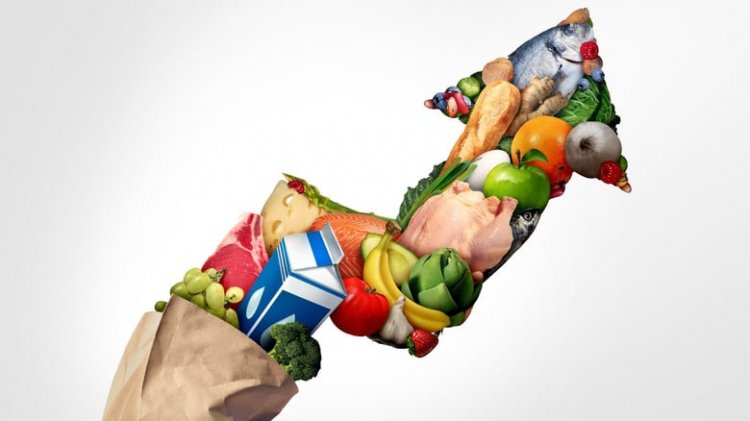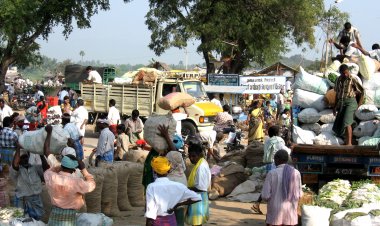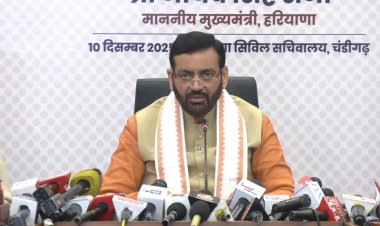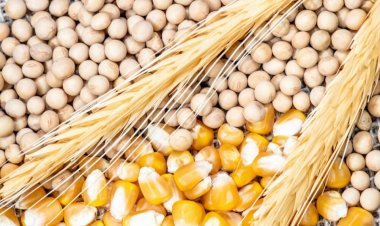Government and RBI Struggle to Tackle Persistent Food Inflation Despite High GDP Growth
The government's own statistics are exacerbating its problems. For instance, May's food grain inflation rate was 10.4 percent. However, government estimates show a continuous increase in production.

Despite the robust GDP growth, the government and the Reserve Bank of India (RBI) face a significant challenge in curbing the ongoing high food inflation. Their hopes now rest on a promising Kharif season, contingent on a normal monsoon. According to the latest data, the food inflation rate stood at 8.7 percent in May and has consistently exceeded 8.5 percent over the past four months, while the retail inflation rate (CPI) remains below five percent. The Wholesale Price Index (WPI) data reveals a food inflation rate of 9.2 percent. This discrepancy raises questions about the rising prices despite government estimates of record food grain production.
The RBI, following its latest monetary policy review meeting, warned that inflation might increase in the coming days. The government's own statistics are exacerbating its problems. For instance, May's food grain inflation rate was 10.4 percent. However, government estimates show a continuous increase in production. Two years ago, despite a decline in wheat production, the government made minor amendments instead of acknowledging the actual decrease. Last year, estimates indicated better production, but government procurement stalled at 262 lakh tonnes, necessitating the imposition of stock limits during the procurement season. This year, the government claims record production again, yet procurement has only reached 266 lakh tonnes.
Market prices for wheat have soared above the minimum support price (MSP) of Rs 2275 per quintal, reaching over Rs 2600 per quintal. Additionally, as of April 1, 2024, the wheat stock in the central pool hit a 16-year low. By June 1, 2024, the central pool's wheat stock was 299.05 lakh tonnes, down from 313 lakh tonnes the previous year.
Last year, to control prices, the government sold over 100 lakh tonnes of wheat under the open market scheme. This year, amid speculation about a reduction in import duty, the government assured sufficient stock to manage prices. This assurance comes despite the release of an estimate for wheat production at 11.2 crore tonnes, raising questions about why prices have risen significantly above the MSP during the procurement season. A key reason is the low government stock.
Moreover, the prices of pulses and edible oils have surged. Edible oil imports in May increased by 45 percent compared to last year, yet their prices rose by 6.7 percent in May, whereas the prices were falling a year ago. When the mustard crop, the country's largest oilseed, entered the market, farmers initially sold it below the MSP of Rs 5650 per quintal. Now, prices have climbed to Rs 6200 per quintal. According to May's WPI data, wholesale food inflation was 9.82 percent, up from 7.74 percent in April. Vegetable inflation soared to 32.42 percent in May from 23.60 percent in April, with onions at 58.05 percent, potatoes at 64.05 percent, and pulses at 21.95 percent.
Retail inflation for pulses has hit 17.1 percent, with pigeon pea prices up by 32.1 percent. The government, having sold excess gram stock at low prices due to two years of surplus, now faces limited reserves. This year, procurement dropped to just 45 thousand tonnes, relying on imports from Australia and other countries to stabilize prices.
Sugar production decline predictions last August prompted government inquiries. As production fell, measures like banning sugarcane juice and B heavy molasses for ethanol were implemented. Consequently, sugar prices have been rising steadily. Recently, dairy companies also hiked milk prices, which will soon impact inflation figures.
Despite the advance GDP estimate increasing agricultural GVA growth from 0.6 percent to 1.4 percent, most crop productions have declined. The market's skepticism about high production figures, reflected in rising market prices, indicates a disconnect between reported figures and reality. Accurate data and a normal monsoon could provide some relief through better Kharif production, but the RBI and the government must ensure data accuracy to effectively combat inflation.



 Join the RuralVoice whatsapp group
Join the RuralVoice whatsapp group







































